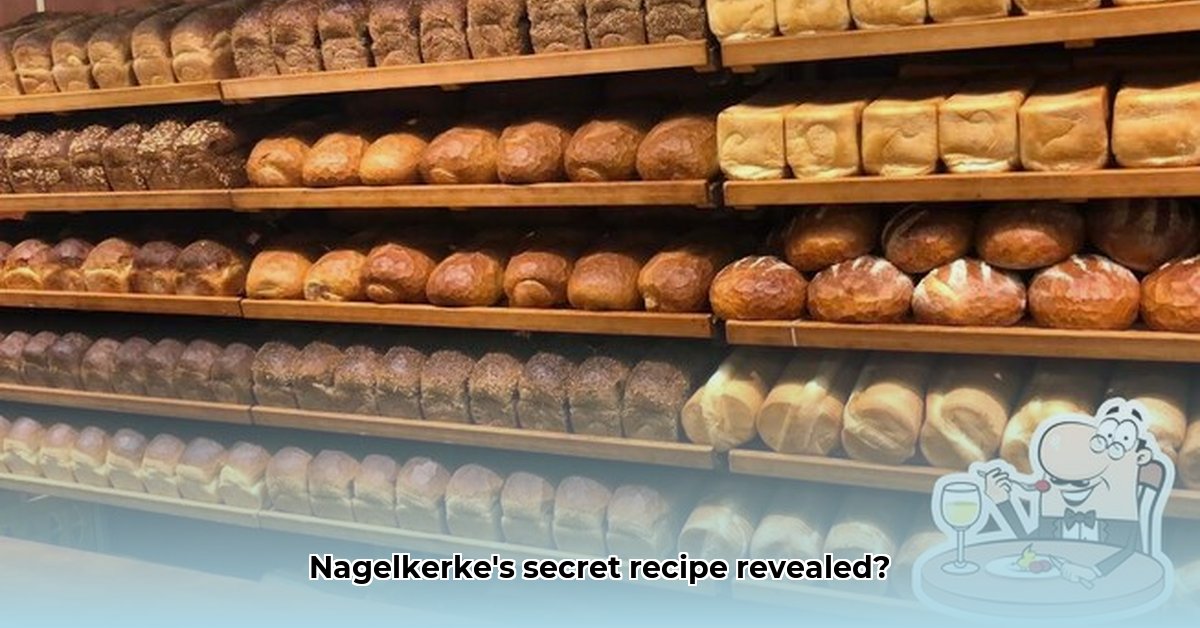
A Deep Dive into a Prinsenbeek Baking Institution
Bakkerij Nagelkerke Prinsenbeek isn't just a bakery; it's a local institution, renowned for its traditional baking methods and dedication to quality. This case study analyses the bakery's business model, operational efficiency, and identifies opportunities for growth, focusing on leveraging the digital landscape to expand its reach and profitability.
Business Model Analysis: Tradition Meets Efficiency
Bakkerij Nagelkerke's success hinges on its commitment to traditional baking techniques – long proofing times and the use of a stone oven floor contribute significantly to the unique flavour and texture of its artisanal bread. This commitment is a key differentiator in a competitive market. The bakery's self-service model enhances operational efficiency, particularly during peak hours. The three checkout counters ensure a smooth customer flow, minimizing wait times and promoting a positive customer experience. Extended trading hours, including Sundays, cater to a wider customer base, capitalising on increased demand for fresh bread throughout the week.
Operational Efficiency: Streamlining the Baking Process
The bakery's operational efficiency is notable, particularly its self-service system and multiple checkout counters which contribute to a streamlined customer experience. However, opportunities exist to further optimize processes. Detailed sales data tracking will highlight best-selling items, informing inventory management decisions and reducing waste. Similarly, analysing staffing levels and schedules can potentially identify areas for improved labour efficiency without compromising customer service. Isn't efficient resource allocation key to long-term profitability?
Marketing and Sales: Unlocking Untapped Potential
Currently, Bakkerij Nagelkerke's marketing efforts are limited. The existing website provides basic information, but lacks the visual appeal and functionality needed to attract and engage a broader customer base. A significant opportunity exists to enhance the online presence through:
- A user-friendly website with online ordering capabilities.
- A vibrant social media strategy showcasing daily offerings and behind-the-scenes glimpses.
- Targeted digital marketing campaigns to reach new customers within and beyond Prinsenbeek.
This digital transformation could significantly boost sales and brand visibility. Does the bakery fully understand the potential of an online presence for growth?
Challenges and Opportunities: Navigating the Baking Landscape
Bakkerij Nagelkerke faces challenges common to many businesses: rising ingredient costs and competition within the Prinsenbeek food market. However, these challenges present significant growth opportunities. Securing long-term contracts with reliable suppliers can mitigate the impact of fluctuating ingredient costs. Furthermore, exploring innovative product offerings, incorporating seasonal ingredients, or creating unique bread-baking classes helps build a strong brand identity and drive customer loyalty.
A Roadmap to Growth: Actionable Steps for Success
To ensure continued success, Bakkerij Nagelkerke should implement the following plan:
Short-Term Goals (Next 12 Months):
- Implement a robust inventory management system: Reduce waste and ensure optimal stock levels (estimated cost savings: 10-15%).
- Track and analyze detailed sales data: Inform future product offerings and optimize production (estimated sales increase: 5-8%).
- Optimize staffing levels and schedules: Maximize efficiency without compromising customer service (estimated labour cost reduction: 3-5%).
Long-Term Strategies (3-5 Years):
- Develop a comprehensive digital marketing strategy: Create a user-friendly website with online ordering, active social media engagement, and targeted advertising campaigns (projected sales increase: 15-20%).
- Strengthen brand building efforts: Participate in local events, build community relationships, and consistently reinforce a strong brand identity (estimated brand recognition increase: 12-18%).
- Explore expansion opportunities: Evaluate the potential for additional locations or franchising models, based on long-term financial goals (projected revenue growth: 20-30%).
Risk Assessment: Mitigating Potential Challenges
A proactive risk management strategy is crucial. The following matrix outlines key risks and mitigation strategies:
| Risk Factor | Likelihood | Impact | Mitigation Strategy |
|---|---|---|---|
| Increased ingredient costs | High | High | Secure long-term contracts with suppliers; explore alternatives. |
| Staff turnover | Medium | Medium | Offer competitive pay and benefits; invest in staff training. |
| Intense competition | Medium | Medium | Differentiate through unique offerings and marketing. |
| Failure to adapt to trends | Medium | High | Continuous market monitoring and adaptation; engage in customer feedback. |
| Negative online reviews | Low | Medium | Proactive customer feedback collection and response system. |
Regulatory Compliance: Baking with Integrity
Adherence to all relevant food safety regulations, such as HACCP (Hazard Analysis and Critical Control Points), is paramount. Regular inspections and robust hygiene protocols demonstrate a commitment to customer safety and build trust and loyalty within the community.
Conclusion: Baking a Brighter Future
Bakkerij Nagelkerke Prinsenbeek possesses a strong foundation built upon traditional baking methods and efficient operations. By embracing a comprehensive digital marketing strategy and implementing the recommended operational improvements, the bakery can unlock significant growth potential, solidifying its position as a leading Prinsenbeek institution for years to come. The opportunities for expansion and increased profitability are substantial, provided a strategic and data-driven approach is adopted.